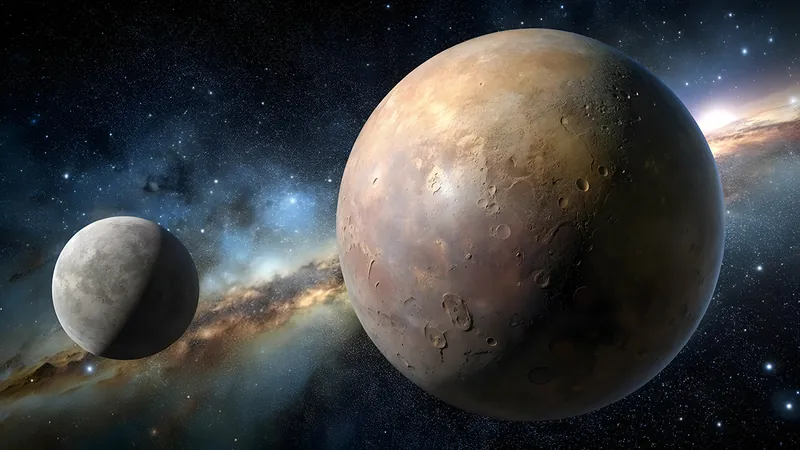
Are Kuiper Belt Objects on the Brink of Catastrophic Break-Up? New Research Reveals Shocking Insights!
2024-10-30
Author: Jia
NORMAN, OKLA. – A groundbreaking study published in *Nature Astronomy* has rocked the scientific community, challenging age-old beliefs about the formation and stability of co-orbiting objects in the mysterious Kuiper Belt, located beyond Neptune. This research shines a new light on the dynamics of these distant celestial bodies, raising more questions than answers.
“Approximately one-third of all Kuiper Belt objects are in orbit around one another, similar to the relationship between the Earth and the Moon,” stated Hunter Campbell, lead author and 2023 graduate from the University of Oklahoma, where the research took place. “What’s particularly intriguing is that in a specific area of the Kuiper Belt, we find pairs of co-orbiting objects that have nearly equal mass. Imagine an Earth-like body orbiting another Earth-like body—such scenarios are typically nonexistent in our solar system.”
The implications of this finding are profound. In certain cases, these co-orbiting bodies are positioned far apart, generating significant instability within the system. Historical theories suggested that collisions with other celestial objects, such as meteorites, were to blame for disturbing these delicate orbits and ejecting one of the bodies into space. Campbell and his colleagues, including former OU professor Nathan Kaib and graduate teaching assistant Kalee Anderson, utilized advanced simulations at the OU Supercomputing Center for Education and Research to propose a radical new hypothesis: gravitational interactions appear to play an equally, if not more critical, role.
“We explored various models in our simulations and found that instead of being disrupted by meteorite collisions, it's far more probable that a substantial Kuiper Belt body passes through the binary system and alters the orbits through gravitational pull,” Campbell explained.
Previously, it was assumed that these widely separated binary objects had always existed in their current state, having somehow survived the solar system's tumultuous four-billion-year history. In contrast, Campbell’s research suggests that these systems might have originated with much tighter orbits, which could have expanded over time due to the gravitational influence of larger passing bodies.
“The furthest observed binary, QW322, is a prime example of this instability. We believe it initially formed as a tighter binary system and gradually widened. There’s a possibility that, in the future, it will fully separate or be replaced by another binary system that widens similarly,” he added.
This study marks a crucial first step toward potentially significant future discoveries. Delving deeper into these mysteries could allow scientists to glean more insights about the Kuiper Belt's evolution, including how it migrated to its current position and the subsequent effects on the orbits of outer planets like Jupiter, Saturn, Uranus, and Neptune.
In a universe full of enigmas, Campbell's findings offer a tantalizing glimpse into the complex dynamics of the Kuiper Belt, opening up a treasure trove of new research possibilities. As further studies are conducted, we might just uncover the secrets of our solar system’s distant residents—secrets that could redefine our understanding of cosmic interactions and the fate of celestial bodies. Stay tuned, as the truths of the Kuiper Belt unravel!

 Brasil (PT)
Brasil (PT)
 Canada (EN)
Canada (EN)
 Chile (ES)
Chile (ES)
 España (ES)
España (ES)
 France (FR)
France (FR)
 Hong Kong (EN)
Hong Kong (EN)
 Italia (IT)
Italia (IT)
 日本 (JA)
日本 (JA)
 Magyarország (HU)
Magyarország (HU)
 Norge (NO)
Norge (NO)
 Polska (PL)
Polska (PL)
 Schweiz (DE)
Schweiz (DE)
 Singapore (EN)
Singapore (EN)
 Sverige (SV)
Sverige (SV)
 Suomi (FI)
Suomi (FI)
 Türkiye (TR)
Türkiye (TR)